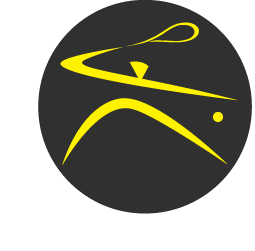Earlier this squash season, in August, the squash community had an enormous wake up call at the Barrie Athletic Club when Steve Rush, an avid squash player and coach, suffered a cardiac arrest on court. Thanks to an AED machine and a few knowledgeable tournament participants and staff, Steve is still with us today.
For readers of Steve's incredible story, please question whether there is an AED machine at your club. If the answer is no, Squash Ontario can help. Any Squash Ontario member facility has access to purchase AED machines at cost through the Mikey Network. Just visit their website at https://mikeynetwork.com/ and let them know you are affiliated with Squash Ontario. It is so important that we are prepared to handle any type of emergency, especially when it means you can help save a life.
The following story was written by Julie Casperson for the St. Andrew's College school website where Steve works as a teacher and squash coach.
Teacher shares how an AED saved his life
Posted: 12/20/2017
Steve Rush is in the prime of his life. He’s got health, family, and happiness. He also has a newfound appreciation for all these things.
In the summer, Mr. Rush, SAC’s Director of IT and Head of Computer Science, suffered a very unexpected cardiac arrest. “I’m fit and healthy,” he says. “I eat low fat and I’m athletic."
Looking back on the near tragedy, Mr. Rush says his life was saved by the miracle of science—not to mention some quick-thinking people trained to use an AED (automated external defibrillator).
There were no warning signs of heart trouble as Mr. Rush headed to the Barrie Athletic Club in Barrie, Ont., for an early-bird squash tournament. The score was 5-3 in his favour when he fell to the ground.
”It was like a military operation how efficiently everyone acted and performed in saving my life,” he says.
Mr. Rush’s squash opponent, Michael Moore, checked for a pulse and started CPR. His wife, Ashley Moore, joined in the rescue effort. The club’s tournament director, Jacob Altenburg, called 911.
Meanwhile, a nearby AED was pulled into action. It analyzed Mr. Rush’s heart rhythm and determined a shock was needed.
The story of Mr. Rush’s survival is relayed through a public service video produced by Action First Aid, the company that trained the athletic club staff in the use of AEDs.
“This guy is here on the squash court and he’s dying in front of me,” Mr. Moore recalls in the video.
“Ultimately it was the AED that helped us through the CPR, kept us on pace, and was able to shock Steve and save his life,” Mrs. Moore says.
Mr. Rush ihas returned to teaching and coaching at SAC, is getting back in shape, and will hopefully return to the court one day soon to compete.
“This kind of a save, where I have no deficiencies and everything is great physically and mentally, they say only happens if you collapse in the emergency ward in a hospital with professionals around,” Mr. Rush says in the video.
He credits the presence of an AED and people trained to use it, in getting his heart started, and he’s making the most of his days. The father of five children is an advocate for the installation of AEDs wherever possible. At SAC, where he’s worked for nearly 30 years, there are eight devices on campus.
The video was presented to the Upper School boys Monday and the Middle School students Tuesday, and they were challenged to locate all AEDs on campus as a sort of healthcare scavenger hunt.
According to Margaret Kirkby, Director of Health and Wellness, SAC got its first AED at least a dozen years ago. “We started with one and realized we have such a large campus,” she said. “We’re a 24-hour operation and there are people who may need it at nighttime.”
Ms. Kirkby said all faculty and staff members are trained every other year in CPR and AED use. The Heart and Stroke Foundation of Canada states that an AED is safe and simple to use: just turn it on and follow the simple voice prompts that tell you everything you need to do. It will not deliver a shock unless needed.
Luckily, none of SAC’s devices have been needed. “We’ve never used, them, but we’re ready!” Ms. Kirkby said. “We have precious cargo to protect.”
FAST FACTS
- Cardiac arrest can occur at any age, at any time, to people of all fitness levels, and without warning.
- For every one minute delay in defibrillation, the survival rate of a cardiac arrest victim decreases by seven to 10 per cent.
- St. John’s Ambulance refers to AEDs as “the only effective intervention for sudden cardiac arrest.
- Without the use of an AED, the chance of a person surviving a cardiac arrest is less than five per cent after 12 minutes.
- It is the goal of the Heart and Stroke Foundation of Canada to make AEDs as common as fire extinguishers in public places.
Story by Julie Caspersen

